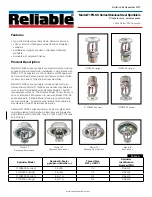
WLH2 Classe
Manual
Page 35 – Revision: 3-2-2021
8.
Dispense about 1 gallon of water from each line. This will sufficiently
FLUSH
the lines. Be
sure to place a container under the spouts to collect the water from the flushing process.
9.
If water supply is RO water (or if the TDS is less than 10ppm), a spoonful of sodium
bicarbonate (baking soda)
MAY
need to be added to the water in the ice bath to raise the
waters TDS to a level that the sensors can effectively operate in.
NOTE:
If TDS is too low,
compressor will not cycle on.
10.
Verify that the UV Lamp operates as expected. The light can be seen from the underside
of the spout.
WARNING!
ULTRAVIOLET RADIATION.
Protect your skin and eyes against ultraviolet
rays. Never look directly at an operating UV light. Always disconnect before removal.
11.
Move the
Waterlogic WLH2 Classe
into its final operating position. Be sure that a
minimum of 2” clearance is maintained around both sides and the back of the
WLH2
Classe
.
12.
This is important to allow proper airflow and heat exchange of refrigeration system.
13.
Be sure to lock the adjustable feet of the
WLH2 Classe
. Never install on an incline.
14.
When the
WLH2 Classe
has reached its Cold Temp Set Point Temperature, the
compressor will cycle off.
15.
Once the
WLH2 Classe
is at the target temperature, sample the water to ensure water
meets expectations and additional rinsing or adjustment is not required.
16.
Check the
WLH2 Classe
for any leaks. External Leak Protection is always recommended.
17.
After about 45min to an hour, dispense about ½ gallon of water from the Sparkling side
to rid the sparkling capsule of any lukewarm water. This will allow the Sparkling canister
to regenerate with chilled water, creating a higher quality of sparkling water.
18.
At this time, the volumetric auto-dispense settings can be configured. See page 11.
























